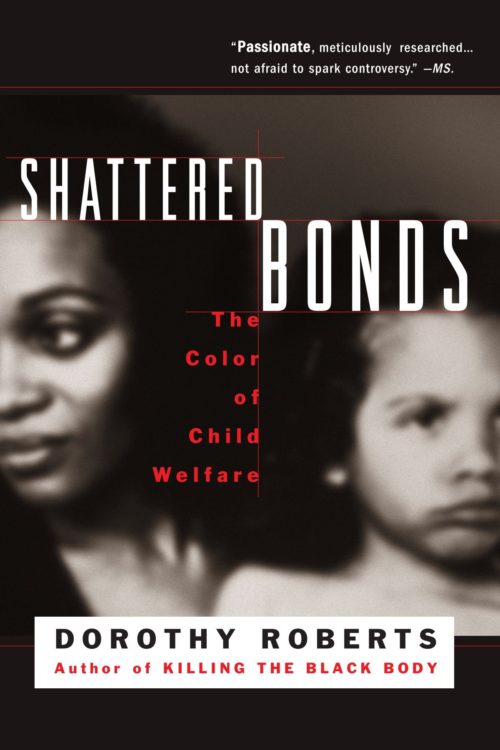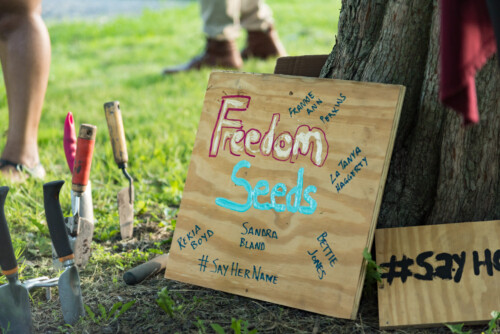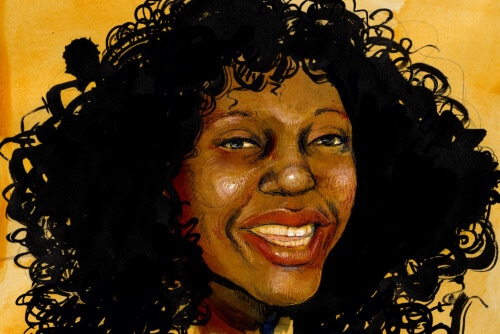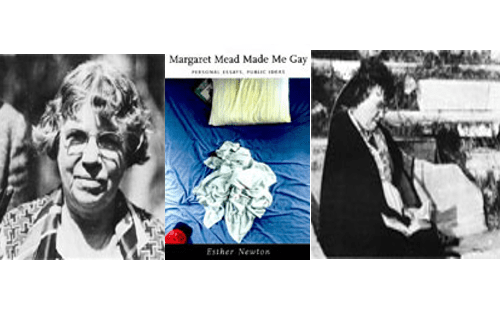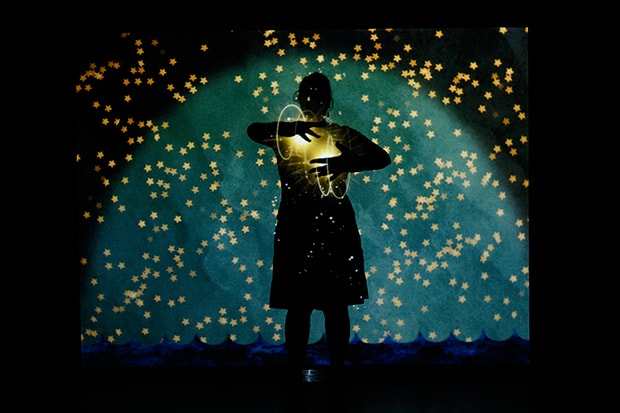The following is an edited transcript of a video presentation made by Dorothy Roberts that opened “Policing Motherhood” at Invisible No More in November 2017. In it, Roberts, an expert and pathbreaking scholar on policing of Black motherhood, succinctly summarizes conclusions drawn over decades of scholarship, including her broadly cited works Killing the Black Body: Race, Reproduction and the Meaning of Liberty (Pantheon, 1997) and Shattered Bonds: The Color of Child Welfare (Basic Book, 2001), which, along with her prolific scholarship, informed the “Policing Motherhood” chapter of Invisible No More: Police Violence Against Black Women and Women of Color (Beacon Press, 2017). Here, Roberts notes the parallel and intersecting operation of prisons, policing, and child welfare, and then once again breaks new ground, issuing a clarion call for the abolition of the foster care system, building on and expanding calls for police and prison abolition and, ultimately, the dismantling of the carceral welfare state in all its manifestations.
I want to discuss the policing of Black motherhood and how the child welfare system, in particular, polices Black mothers. There are many ways in which the state polices Black mothers in the United States. Every institution contributes to this policing, whether we are talking about prisons, police, public assistance, schools, health care, or foster care. Every single one of these systems operates in a way to monitor, regulate, punish, and devalue Black mothers. Policing Black mothers is an essential part of the long history of institutionalized racism, white supremacy, and patriarchy in America. I do not have time to go into that long history, but if you think about it, you will recognize that the very origins of slavery in the United States were invested in policing Black mothers to exploit their reproductive labor and to ground the oppressive notion of Black people’s innate inferiority in Black women’s childbearing.1
Yet one aspect of the carceral state that polices Black mothers that often gets overlooked is the child welfare system. It’s amazing that this gets so little attention given that it’s such a powerful system. It’s a system that allows government agents to force their way into your home without a warrant and take your children away based on unproven allegations and subjective suspicions before any adjudication of wrongdoing.2 Most of the children in the foster care system were removed from their parents on charges of child neglect because of living conditions related to poverty.3
It’s a system that devastates hundreds of thousands of families and especially targets at Black mothers.4 (Indigenous mothers also have their children taken from them at very high rates.) My work has focused on Black mothers involved in the child welfare system. This system targets Black mothers by focusing on outcomes produced by unjust structural forces, in ways that are supported and amplified by political decision-making; harmful child welfare ideology; and intersecting race, gender, and class bias on the part of government agents. Child welfare decision-making is deeply affected by negative stereotypes of Black maternal unfitness and devaluation of Black mothers’ bonds with their children.5 Studies have found that it takes less risk of maltreatment for a Black child to be removed from the home compared to a white child.6
The racial disparity in the child welfare system also reflects a political choice. Child welfare policy became increasingly stingy and punitive – and the foster care population has skyrocketed – since the 1970s, as Black children composed a greater proportion of the caseloads.7 As I note elsewhere, “As the child welfare system began to serve fewer white children and more minority children, state and federal governments spent more money on out-of-home care and less on in-home services.”8 The state’s reliance on foster care as its main service to struggling families is also based on an inhumane neoliberal approach to caregiving, which relies on individual parents’ private resources and addresses economic deprivation with child removal rather than with material support and social change.
Why has this unjust disruption of families generated so little protest? Many people still believe that child protective services save children. The government claims to protect children from monstrous parents when, in fact, it destroys families and inflicts extreme trauma and other harms on the children it claims to help. Most children placed in foster care experience not only psychological harm from being forcibly removed from their families, but also, frequently, abuse. The child welfare system operates a foster-care-to-prison pipeline not unlike the school-to-prison pipeline: children living in or aging out of foster care are at high risk of being locked up in juvenile detention and adult prison because of vulnerabilities foster care itself creates.9 The child welfare system serves as a way for the government to blame Black mothers for the structural injustices that disadvantage their children. This scapegoating of Black mothers for institutionalized racism and poverty works so well that most Americans believe foster care is the remedy for Black children’s deprivation.
Even people who might recognize the injustice of incarcerating a mother might not recognize that putting her children in foster care can inflict a similar injury and can operate in the same way to police and punish Black mothers and blame them for the problems that their children experience. In other words, foster care operates in much the same way as prison. Both of these systems are parallel forms of punishment: both disproportionately target Black mothers. About a third of the children in US foster care have been removed from Black mothers. About a third of incarcerated women are Black mothers.10
The prison and foster care systems intersect in many ways. Incarceration puts many mothers at risk of losing custody of their children to foster care or even of the permanent termination of their parental rights. Law enforcement’s racial profiling also intensifies the risk of state removal of children. Black mothers are more likely to be policed by law enforcement, and so they are more likely to come in contact with police officers and other government agents who can accuse them of child maltreatment. Moreover, the charges that police bring against them also allegedly make them bad mothers and can be used to justify putting their children in foster care. Child protection agents often call in police to physically remove children from their homes.11 They submit reports of child maltreatment to child welfare agencies and conduct warrantless home inspections, which can lead to criminal charges, either for child abuse and neglect or for unrelated crimes, such as drug possession, that child welfare agents happen to detect.
So, policing by law enforcement and policing by the child welfare system support each other in practice by delivering Black mothers into each other’s carceral clutches. They also support each other ideologically by promoting the same vilifying messages about Black mothers and by pretending they function to protect people when, in fact, they function to blame Black mothers for just about every problem that exists in our society – problems that are actually caused by structural racism, sexism, and poverty. It is therefore important to understand how these carceral systems operate simultaneously at both practical and ideological levels to punish Black mothers.
As researchers and activists, how should we confront the intersection of law enforcement, prisons, and foster care? First, we must recognize the policing function of the child protection system and advocate for systemic abolition. Once we understand how foster care functions like, and interacts with, other carceral systems that are more obviously punitive in nature, we can advocate an abolitionist approach to dismantling all of them.12 Our approach to the entire carceral state should apply to the child welfare system: it needs to be abolished because it is part and parcel of an integrated web of institutions designed to coercively maintain unjust power arrangements.
Second, we must envision noncarceral approaches to families’ needs. What pathological notion of child welfare animates a system that supposedly serves families by destroying the most vulnerable among them? The child welfare system is founded on the myth that the reason why there’s so much disadvantage in our society – why some people are so much worse off than others and struggling to survive – is because their mothers took bad care care of them. According to this view, the remedy is to place socially disadvantaged children in the government’s care. Conversely, the child welfare system also promotes the myth that the reason some people are socially advantaged is because they have better parents. Together, these myths obscure the need for radical social change to create a system that truly supports all families. We need to abolish the very philosophy on which the child welfare system is based – a philosophy that requires blaming and punishing mothers and relies on taking their children away.
This philosophy must be replaced by approaches, policies, and practical resources that support families, rather than police and punish them. If parents had adequate income, child care, and other material resources needed to raise children; access to meaningful support networks; freely available high-quality health care; families that were valued equally; and a context in which the structural violence against families, such as prisons, were dismantled, there would be no need for foster care. It is important to educate people about how the child protection system actually functions. It is harder to get people to think about abolishing foster care than to get them to think about abolishing prisons. To many people, foster care may be bad for children but at least it protects children from parents who are even worse for them. We need to help people critically examine foster care so that they can understand the need to abolish it.
We must also recognize that the mothers who are being policed are the ones we should listen to and include in our organizing to end the system. Mothers around the country whose children have been placed in foster care have organized to change the philosophy and the practice of child welfare, and they need our support. It is very difficult for these mothers to have a real say in transforming the system: they have very few resources, they are stigmatized, and their very actions to bring about change are seen as evidence of their failure to acknowledge their own culpability and, therefore, as reason to keep their children in foster care. We need to collaborate with mothers involved in the child welfare system in order to abolish it.
- Dorothy Roberts, Killing the Black Body: Race, Reproduction, and the Meaning of Liberty (New York: Pantheon, 1997; New York: Vintage, 2017). [↩]
- Diane L. Redleaf, They Took the Kids Last Night: How the Child Protection System Puts Families at Risk (Santa Barbara, CA: Praeger, 2018). [↩]
- Don Lash, “When the Welfare People Come”: Race and Class in the US Child Protection System (Chicago: Haymarket Books, 2017); Tina Lee, Catching a Case: Inequality and Fear in New York’s Child Welfare System (New Brunswick, NJ: Rutgers University Press, 2016); Dorothy Roberts and Lisa Sangoi, “Black Families Matter: How the Child Welfare Punishes Families of Color,” Appeal, 26 March 2018, https://theappeal.org/black-families-matter-how-the-child-welfare-system-punishes-poor-families-of-color-33ad20e2882e. [↩]
- Lash, When the Welfare People Come; Roberts and Sangoi, “Black Families Matter”; Dorothy Roberts, Shattered Bonds: The Color of Child Welfare (New York: Basic Book, 2001). [↩]
- Center for the Study of Social Policy, Race Equity Review: Findings from a Qualitative Analysis of Racial Disproportionality and Disparity for African American Children and Families in Michigan’s Child Welfare System, 2009. See generally Roberts, Killing the Black Body; Melissa V. Harris-Perry, Sister Citizen: Shame, Stereotypes, and Black Women in America (New Haven, CT: Yale University Press, 2013). [↩]
- Stephanie L. Rivaux et al., “The Intersection of Race, Poverty, and Risk: Understanding the Decision to Provide Services to Clients and to Remove Children,” Child Welfare 33 (2008): 151, 165–6; Alan J. Detlaff, et al., “Disentangling Substantiation: The Influence of Race, Income, and Race on the Substantiation Decision in Child Welfare,” Children & Youth Services Review 33 (2011): 1630, 1634–6. [↩]
- Roberts, Shattered Bonds, 15–16. [↩]
- Dorothy Roberts, “Prison, Foster Care, and the Systemic Punishment of Black Mothers,” UCLA Law Review 59 (2012): 1474, 1484. [↩]
- See, e.g., Ali Watkins, “She Ran Away from Foster Care. She Ended up in Handcuffs and Leg Irons,” New York Times, 6 December 2018. [↩]
- Roberts, “Prison, Foster Care, and the Systemic Punishment of Black Mothers.” [↩]
- Frank Edwards, “Family Surveillance: Police and the Reporting of Child Abuse and Neglect,” RSF: The Russell Sage Foundation Journal of the Social Sciences 5 (1, 2019): 50–70. [↩]
- Angela Davis, Abolition Democracy: Beyond Empire, Prisons, and Torture (New York: Steven Stories Press, 2005); Beth E. Richie, Arrested Justice: Black Women, Violence, and America’s Prison Nation (New York: NYU Press, 2012); Andrea J. Ritchie, Invisible No More: Police Violence against Black Women and Women of Color (Boston, MA: Beacon Press, 2017); Dorothy E. Roberts, “Digitizing the Carceral State,” Harvard Law Reviewc 132 (2019): 1695, 1724–8. [↩]
